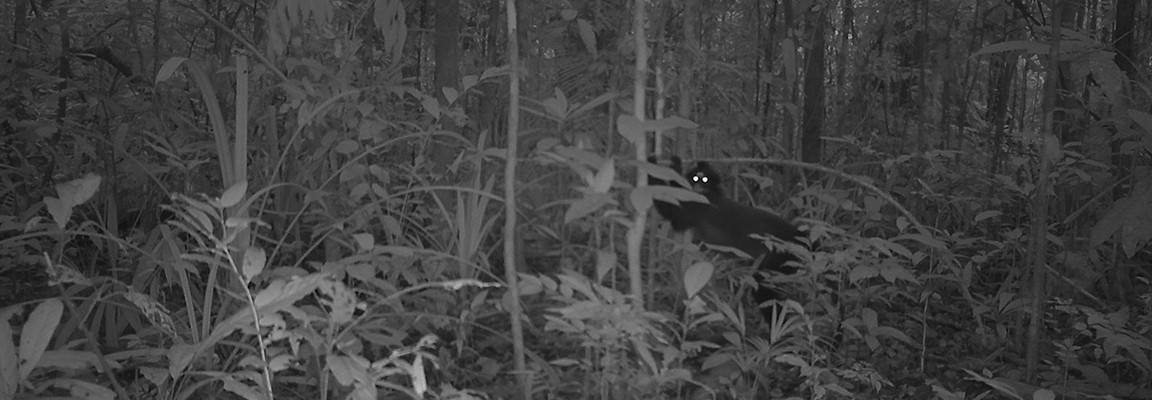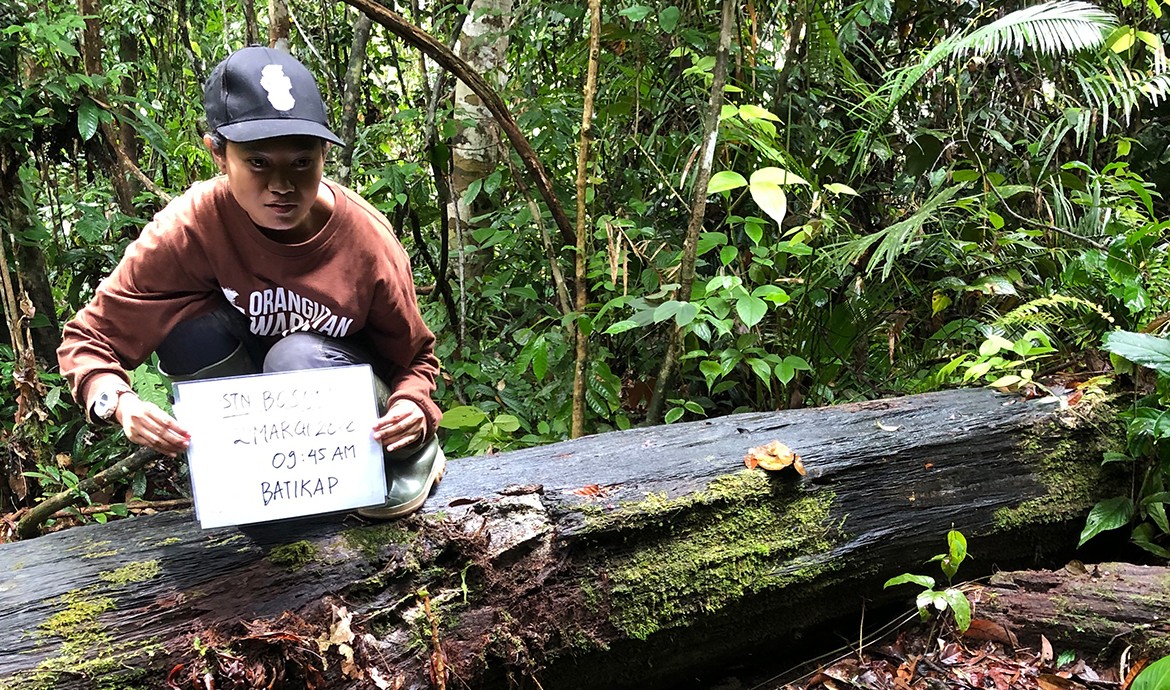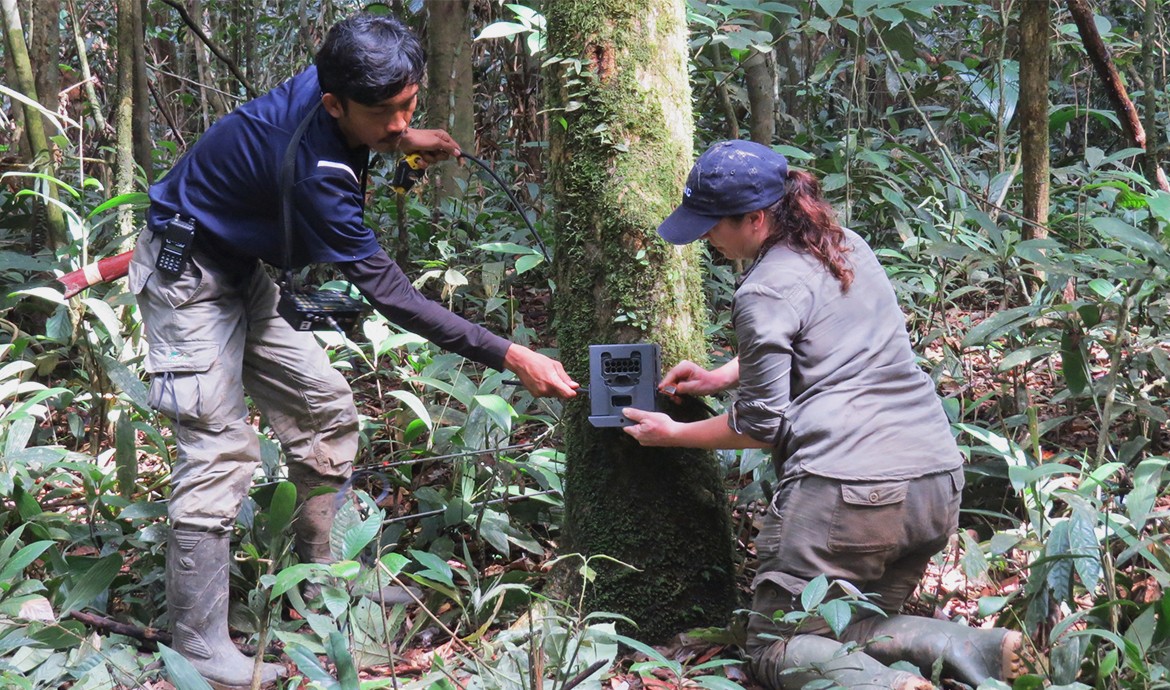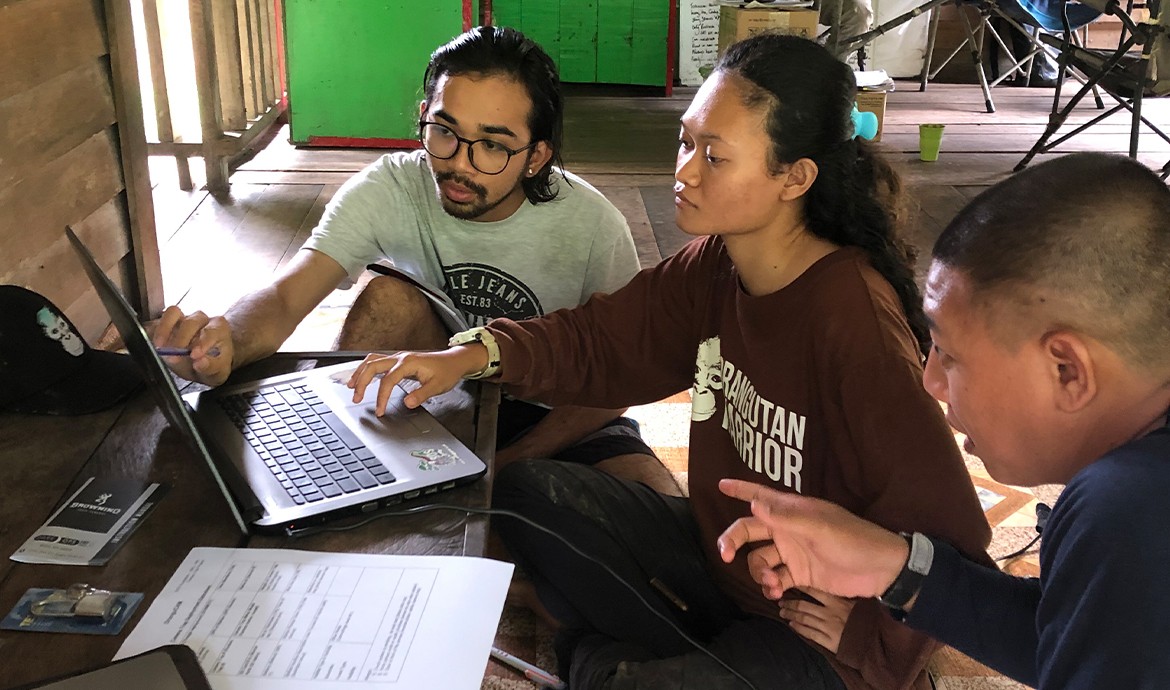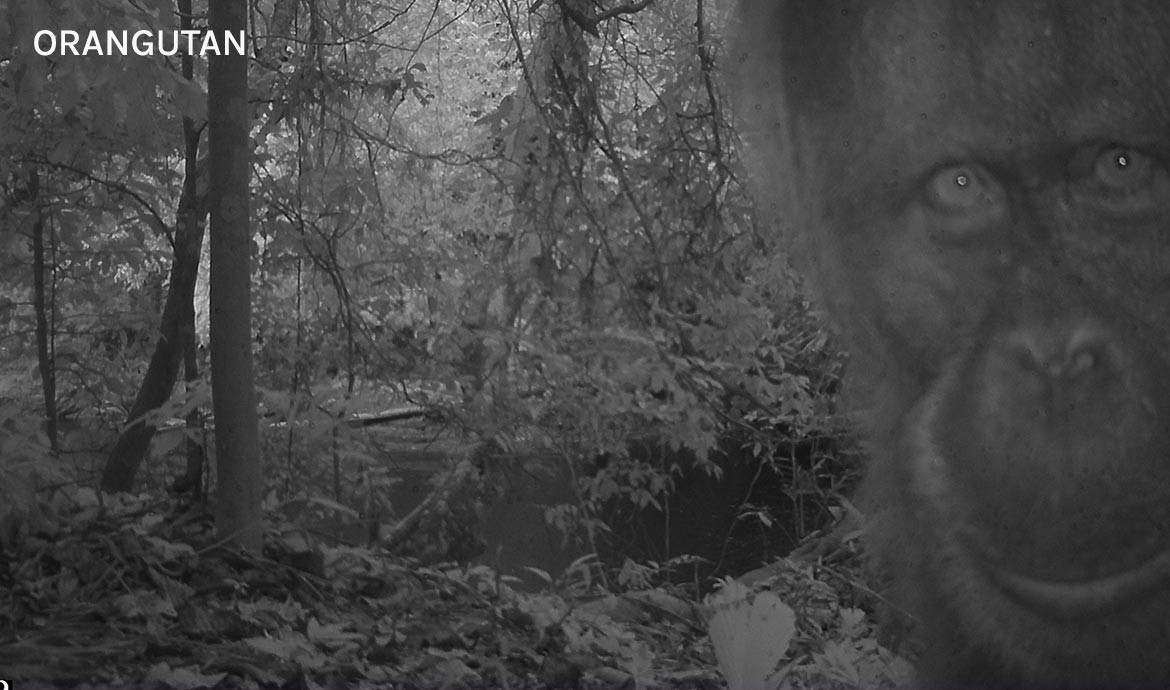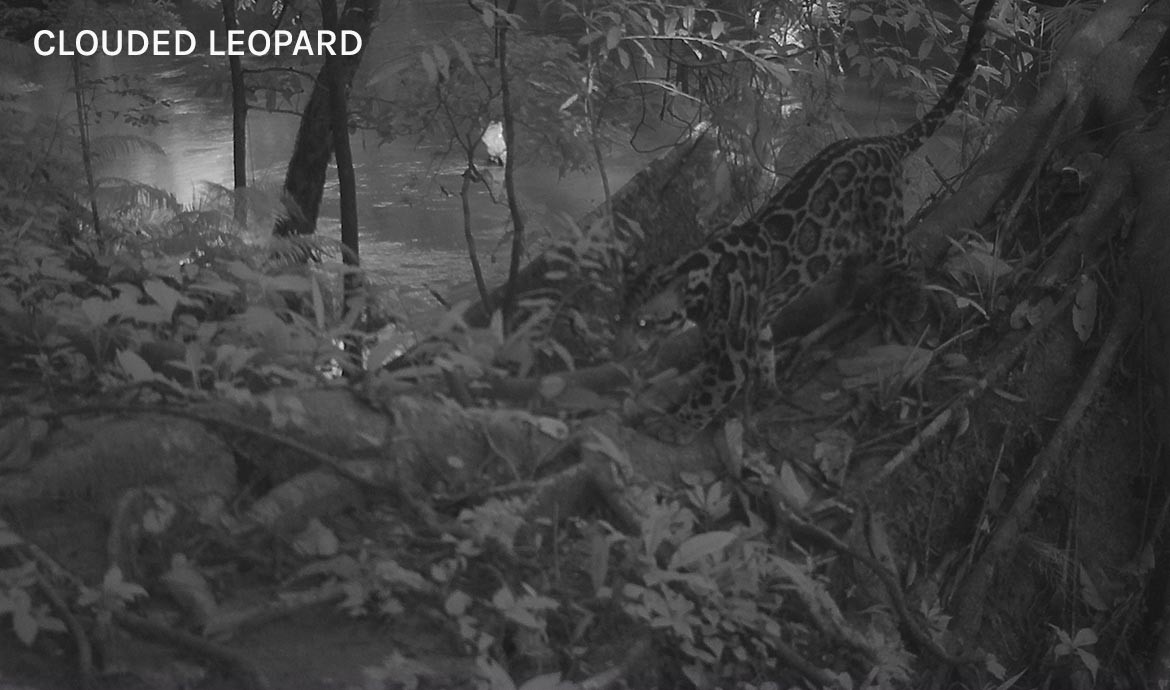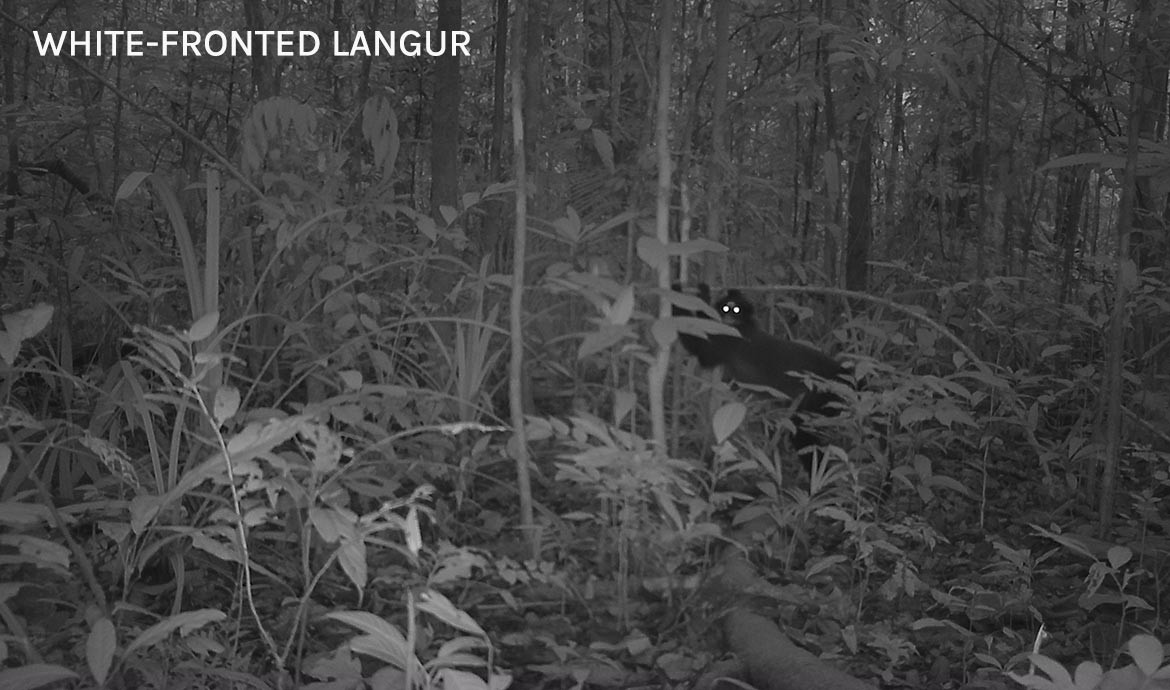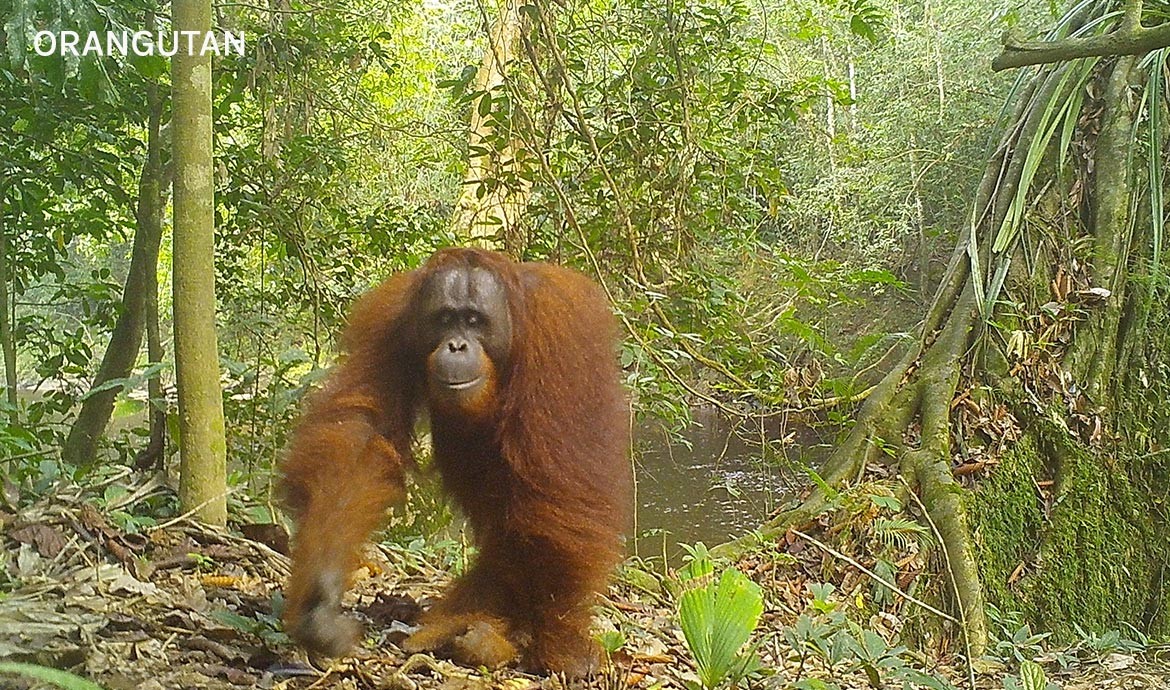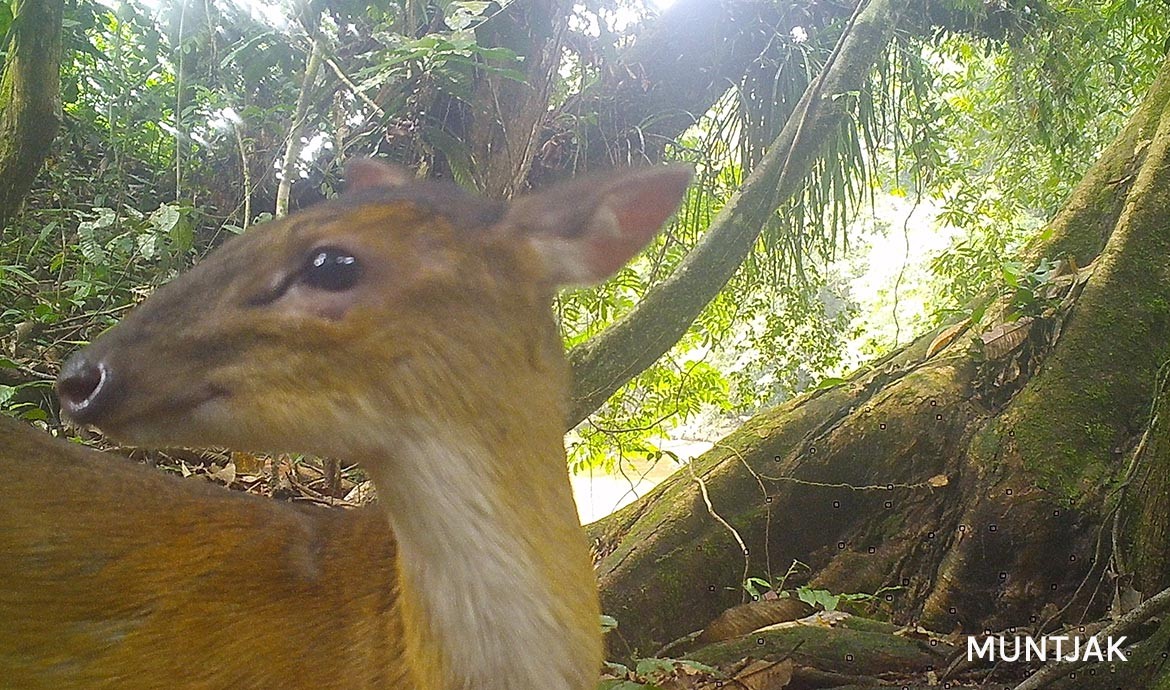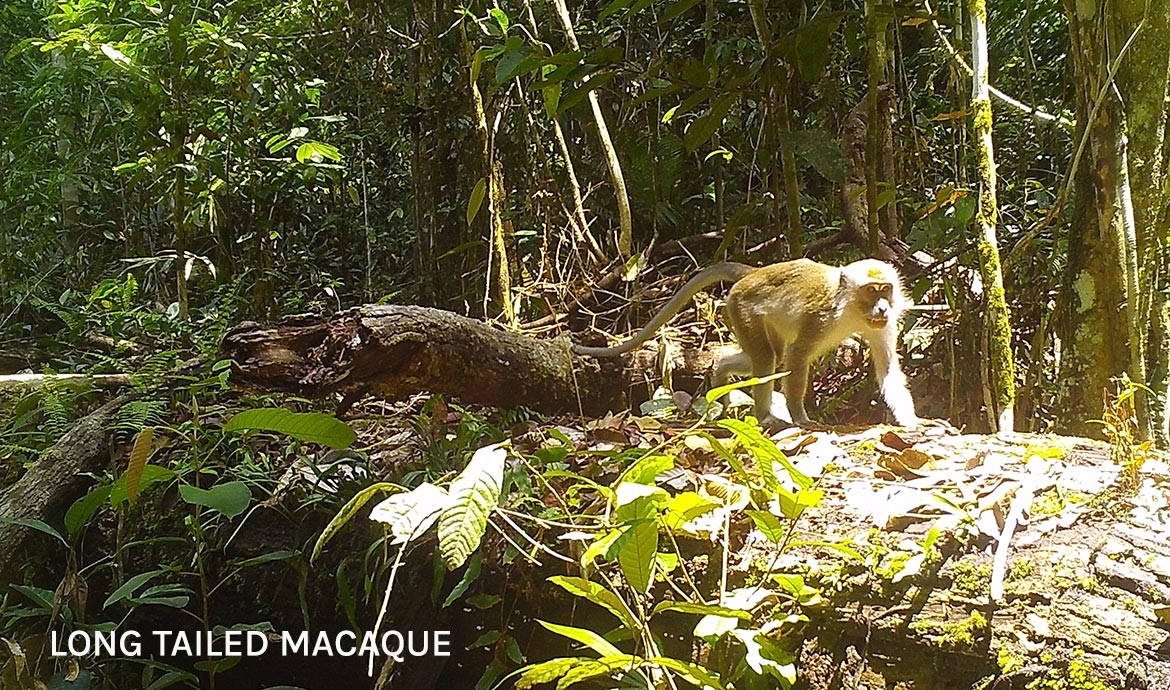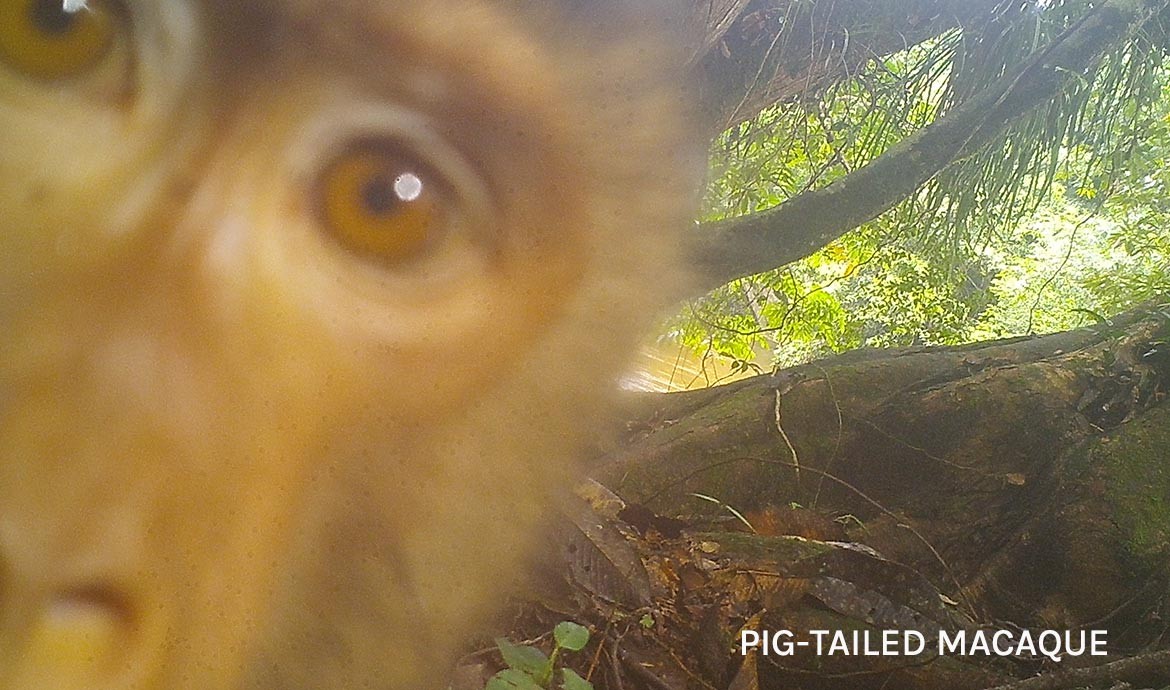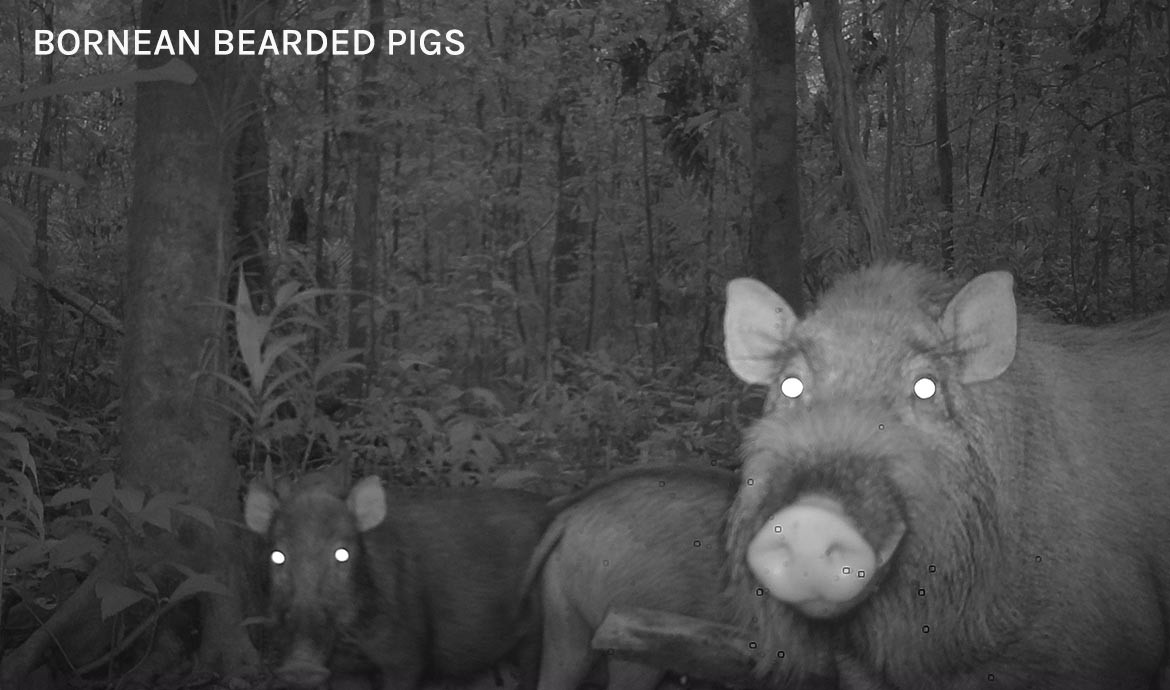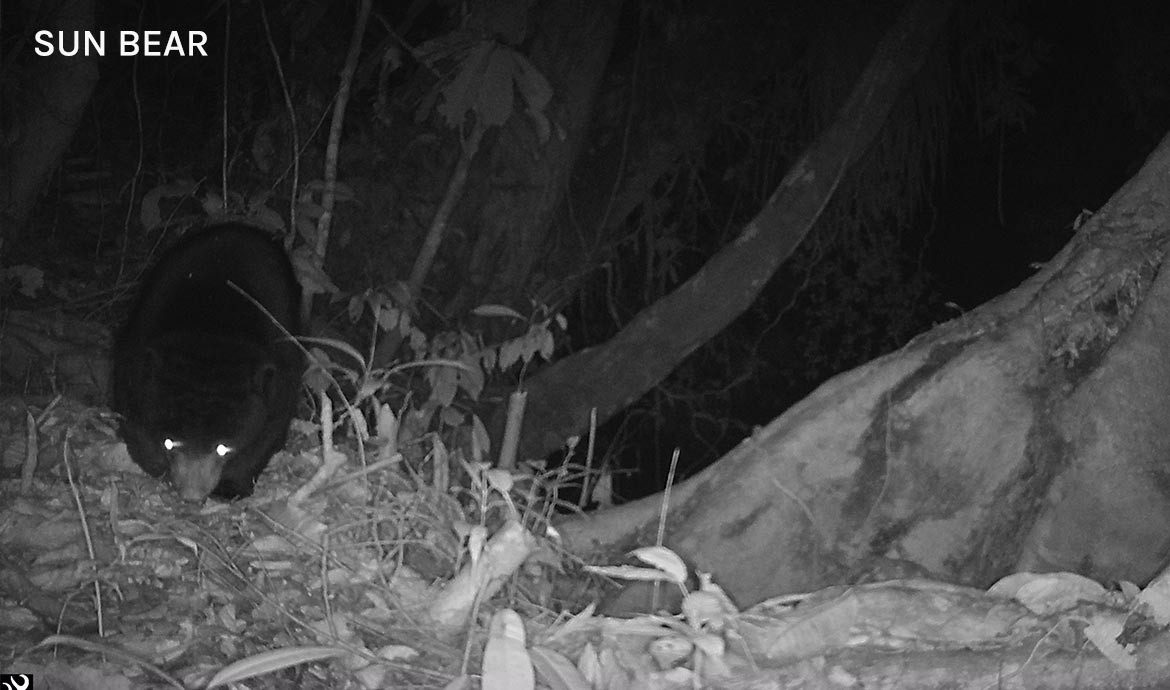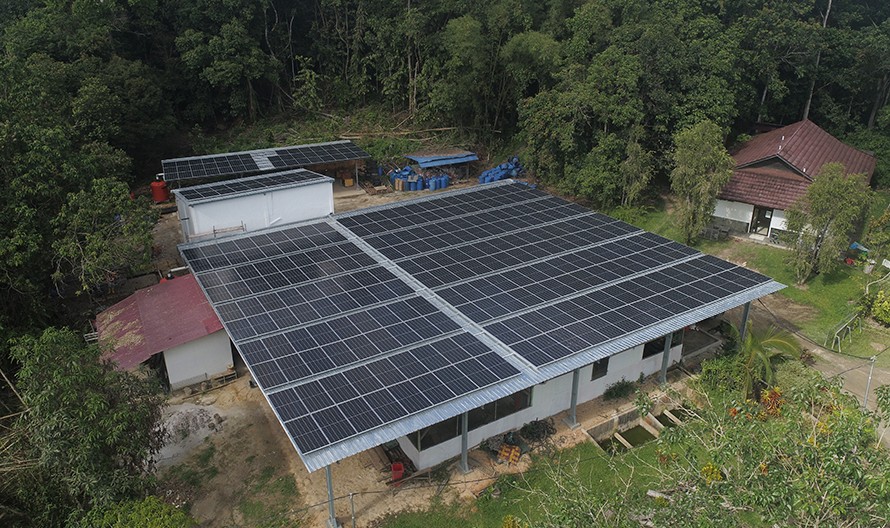In collaboration with the Institut Pertanian Bogor (IPB University) and the University of British Columbia, a camera trap project aims to answer questions about the distribution of orangutans after being released in the Bukit Batikap Protection Forest in ways that traditional survey methods cannot, all the while better understanding the wealth of biodiversity within this this invaluable forest.
The Bukit Batikap Protection Forest, one of our orangutan release sites, with already 190 released orangutans and 15 wild-born babies, harbours a stunning number of wildlife species. Observing even the most conspicuous species can still be an extraordinarily difficult task in such an environment. When it comes to orangutans, who live high in the canopy and are capable of applying their staggering intelligence to evade the attention of humans, the obstacles multiply exponentially.
Post-release, the orangutans are monitored using radio tracking implants, which enable the team to locate nearby individuals and gather data on their behaviour. However, as the orangutans move out of radio range to establish their individual home ranges and the battery life of the implants expire, only a small number of orangutans, whose home ranges are known, are able to be regularly monitored.
This presents a challenge since the Batikap forest is able to support a larger population than currently ranging there and the aim is to reintroduce more orangutans to increase the resilience and genetic viability of this reintroduced population. However, first we need to better understand long-term survivorship of previously released orangutans, the current density, and how the reintroduced population is distributed throughout the area.
A NON-INVASIVE TECHNOLOGY
We are continuously seeking new, non-invasive methods to monitor the progress of reintroduced orangutans and safeguard their wellbeing. Our goals are to ensure that we are doing all we can to maximize their chances for success post-release, as well as equip our teams with the tools to follow the progress of individual orangutans for many years to come. However, as one of our closest living relatives, orangutans are susceptible to the same diseases as humans and the importance of using non-invasive methods has been amplified by the COVID-19 pandemic.


